THE INSIDE TRACK • July 2021
Ten things you might not know about your passport
The British passport is a powerful document that allows the holder to enter 173 countries without the need to apply for a visa. Paul Sillers takes a peek at the many cool features, embedded security technologies and interesting historical facts behind its design and evolution
Most of us haven’t had the opportunity to use our passports over the last 18 months, but it’s time to dust them down, check they still have enough validity left for the country we intend to visit, and head to ba.com to book a flight. But first, you might want to reacquaint yourself with your little 34-page friend...
Henry V created the first British passport
Rival theories surround the origins of the passport. But what is certain is that the first UK passports were brought in during the reign of Henry V (who personally signed them) and enshrined in the Safe Conducts Act of 1414. This increasingly impinged on the monarch’s time so, from 1540, the issuing of passports was delegated to The Privy Council. Since 1794, the granting of British passports has come under the remit of the Secretary of State.
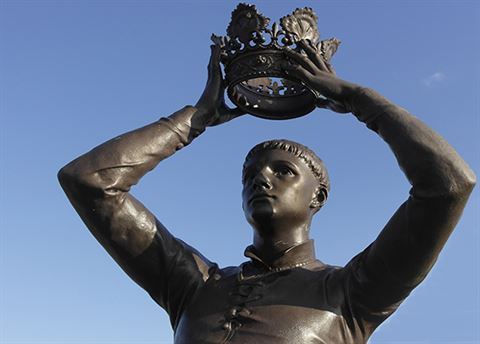
Biblical origins
However, both British and French claims of inventing the passport concept are significantly pre-dated by the Old Testament reference, in the Book of Nehemiah, to an event in 445 BC, when Persian king Artaxerxes issued letters of safe passage to Nehemiah to enable him to return from exile in Persia to Jerusalem.
The French connection
In parallel to the evolution of the British passport, the French word passeport (meaning ‘authorisation to pass through a seaport’) originates from 1420 during the reign of Louis XI, when a certificate was issued by the Lyon authorities for the free circulation of merchandise. By 1464, the concept was adapted so that people, not just goods, could be given safe passage (laissez-passer in French), guaranteeing unhindered travel in specific jurisdictions.
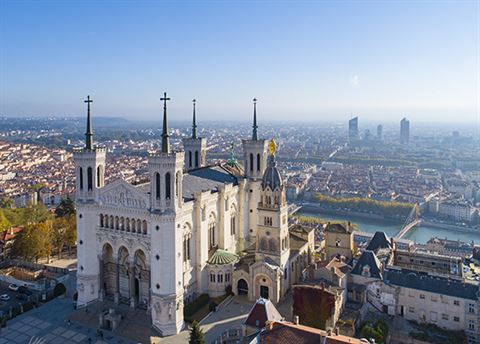
Pardon my French
Ever wondered why there’s always some French text in the British passport? From 1778 onwards the official language used for passports was French, the language of global diplomacy at the time. Prior to that year, Latin and English had been used. Following the end of World War I, the League of Nations (the precursor of the UN) organised the Paris Conference on Passports, Customs Formalities and Through Tickets in 1920, which designated a global specification for passports, including a requirement for text to be in two languages, with one of them having to be in French. This requirement was later modified by the International Civil Aviation Organization to allow countries to use their native language plus a second language that must be either English, French or Spanish.
Picture perfect
Until the outbreak of World War I, a perennial issue was the difficulty of proving linkage between the passport document and its holder, a challenge that was resolved with the advent of photography in the early 20th century. From 1914 onwards, a photograph of the holder became an integral component. In today’s UK passport, the photograph is also digitally embedded inside the machine-readable RFID chip. Cool tip: Take a magnifying glass and look at the additional image of yourself on page three of your passport. You’ll discover that the image is constructed from the letters and numbers that make up your surname and date of birth – it’s an extra security feature.
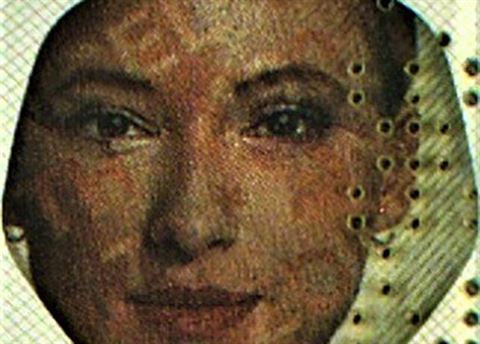
On your marks
The British passport contains a series of security watermarks. The visa pages contain a 3D watermark of William Shakespeare plus a 2D watermark of a scroll, a quill, and the corresponding page number. And on the personal data page is a 3D watermark of the Gipsy Moth IV yacht in which famed British mariner Sir Francis Chichester sailed around the world. Additionally, there are watermarks incorporated in the passport of floral motifs of the rose, daffodil, thistle and shamrock, denoting England, Wales, Scotland and Northern Ireland, respectively.
Special inks
To increase security even further, the latest UK passport is printed using special security inks. For example, the Royal Salutation on the front inside cover uses intaglio ink, which creates a raised, three-dimensional effect. Elsewhere in your passport, ultraviolet inks that only reveal text or images when exposed to UV light, and infrared inks that disappear when exposed to infrared light, are also used. Thales, the manufacturer of the new British passport, also deploys a specially trademarked ‘Gemini’ ink that fluoresces in two colours when exposed to UV light.
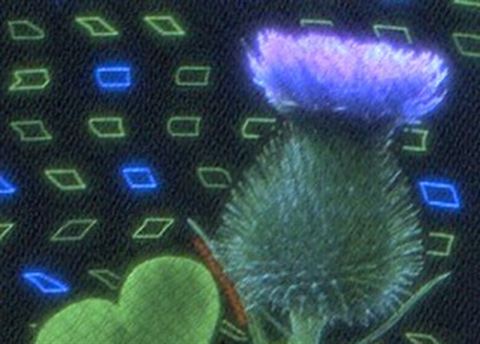
It’s a wrap
The most important page in the passport is the ‘data page’, which contains the holder’s biographic information. To protect against the nefarious intentions of forgers, the new British passport uses polycarbonate, a type of durable plastic, instead of paper, to encapsulate the information, images, secure elements and holder data in an interlocked manner. Further security used to protect against tampering includes laser engraving, ‘positive/negative embossing’ and ‘tactile laser marks’.
Get creative
Throughout the passport’s visa pages — to add an artistic dimension as well as additional security – unique and individual designs for each double-page spread include an image of a British pioneer from the realms of art, architecture, inventions and science. Notable personalities and their associated achievements include John Constable’s The Hay Wain, Sir Giles Gilbert Scott’s designs for the iconic red K2 telephone kiosk and Liverpool Cathedral, designs for the London Underground, including Harry Beck’s famous Tube map, and pioneering mathematicians Charles Babbage and Ada Lovelace, sometimes referred to as the first computer programmers.
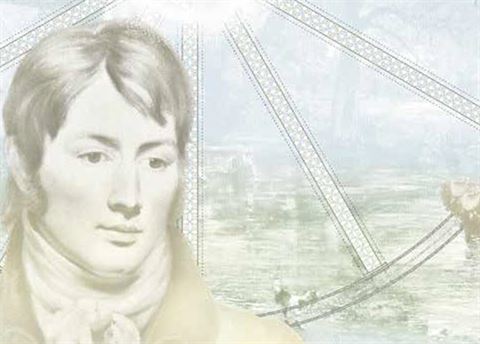
Cover story
Following the outcome of the UK’s decision to leave the EU, the cover of the British passport has now been changed to blue for new passports issued from 2020 onwards, a switch from the previous EU-formatted burgundy design. The colour change is in fact a reversion to the era of air travel’s earliest days, as British passport covers had been blue from 1921 until 1988, when the European format was adopted. The internationally standardised B7 size format (125 × 88mm) remains unchanged.
The only thing you have to remember now is to actually take your passport with you before you head out to the airport. To find out more about the current airport experience, click here
This article has been tagged Technology, Travel Tips
More from previous issues
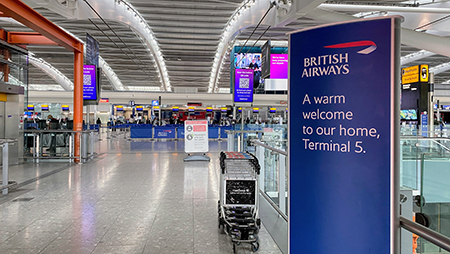
The flight diaries: what it’s like to fly right now
After spending months grounded, Michele Robson gives us a blow-by-blow account of getting airborne now that travel restrictions are lifting
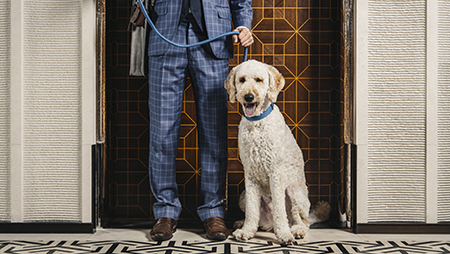
Five of High Life’s most-read travel stories right now
British Airways’ magazine, High Life, is serving up holiday inspiration online. Here’s what’s taking off…
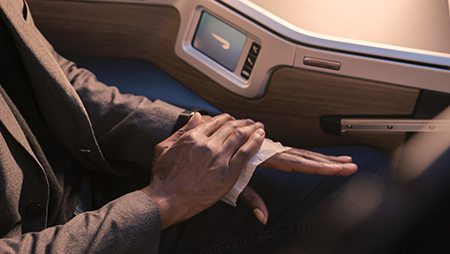
Welcoming you back on board
Wheels up: 17 May 2021 marked a good day for travel, but just how different will things look on your journey? Here’s everything you need to know
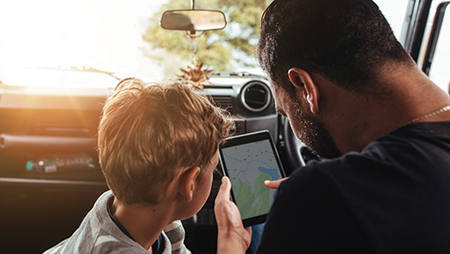
How do you… plan the perfect family road trip?
Seasoned driver and dad Rob Taylor shares his tips on how to survive and thrive on long journeys with the kids in tow
